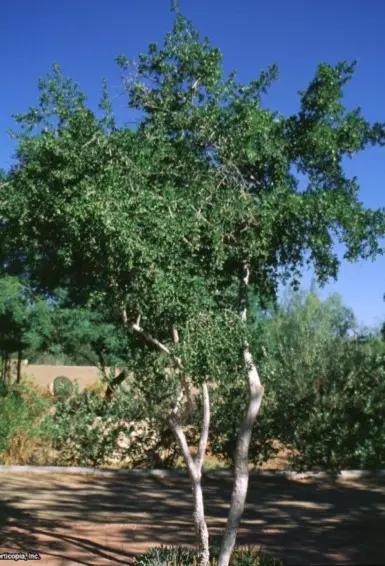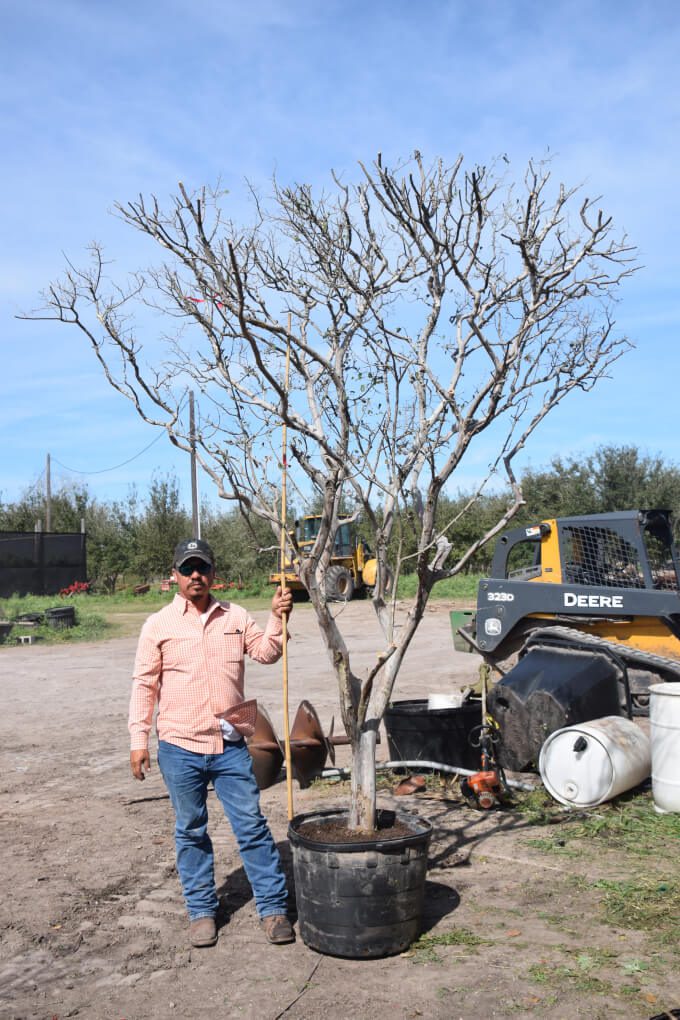Texas Persimmons, also known as Chapote, is a small semi-deciduous tree with dark green leaves.

It is often low forking or multi-trunked. In South Texas, Texas Persimmons performs much like a live oak, retaining its leaves throughout the winter and then dropping them shortly before flushing fresh leaves in the spring. It prefers well drained, alkaline soils. A smooth trunk is one of the most striking characteristics of Texas Persimmons—white, pink, and gray colors show beneath the pealing bark. It grows to an average of 15 or 20 feet tall but can reach 35 feet.
Texas Persimmons are dioecious, which means that male and female flowers are produces on different plants. If you want fruit you need a male and female tree. In commercial landscaping applications, you probably want to try to avoid the female or fruiting trees. Some of your residential clients may prefer you avoid the fruit near their paved areas. Chapote blooms in March and April. The flowers are white, urn-shaped blooms. The fruit is small and black and ripen in August. They taste like prunes and are relished by birds and mammals alike. Native Americans used the fruit to make black dye for animal hides. This tree is a host for the Grey Hairstreak and Henry’s Elfin caterpillar.
The persimmons below was wild harvested and cured for three weeks. Since its winter, it won’t flush new leaves until the spring. But even almost bare, it is still a beautiful tree – just look at that beautiful gray bark!

